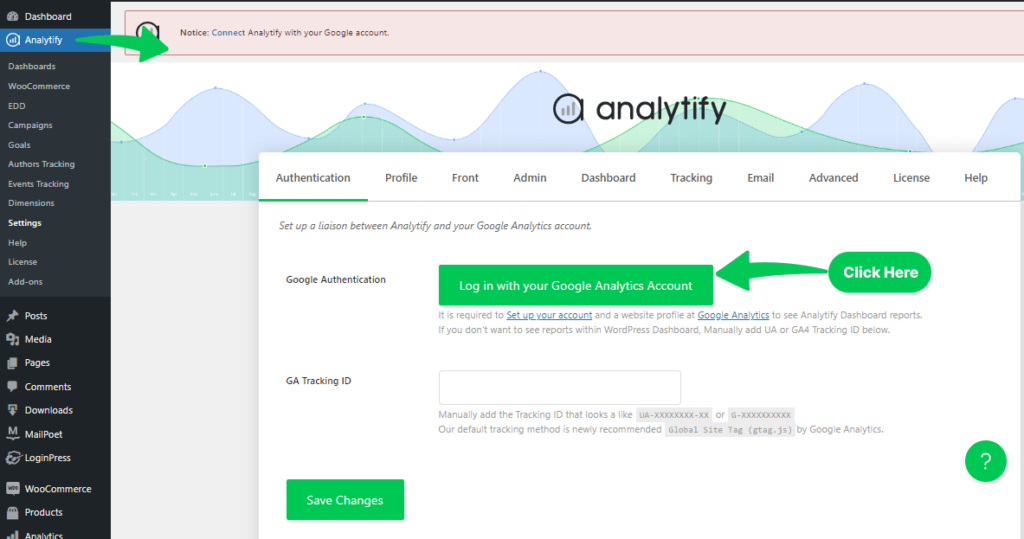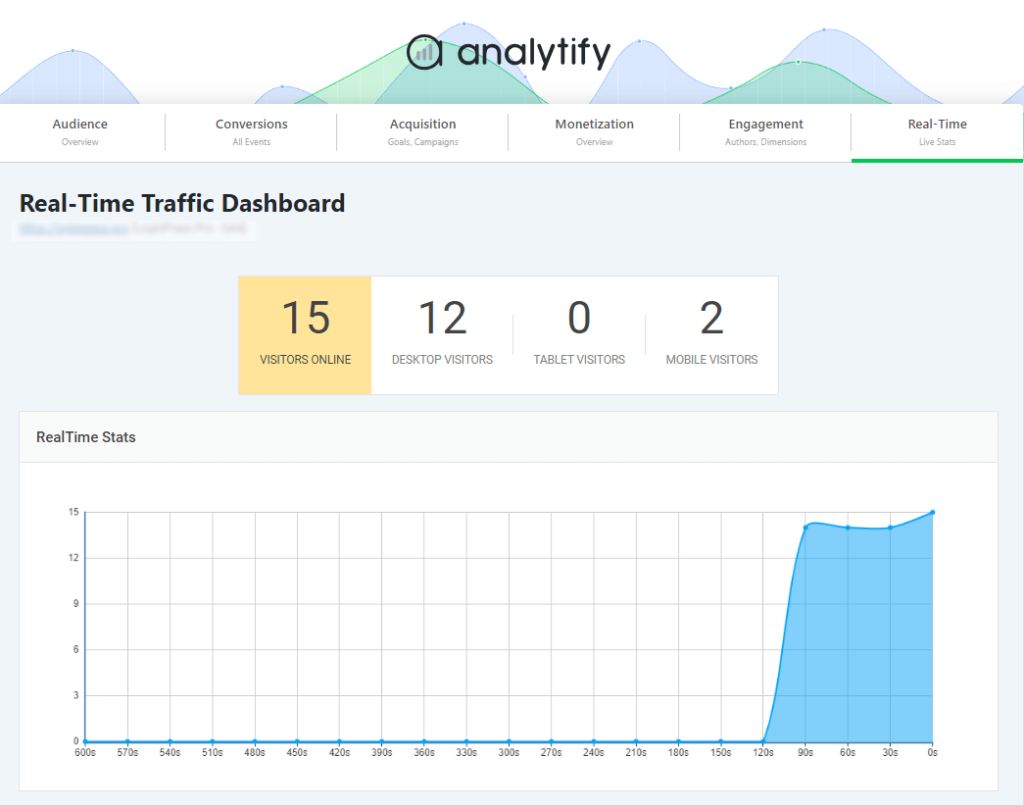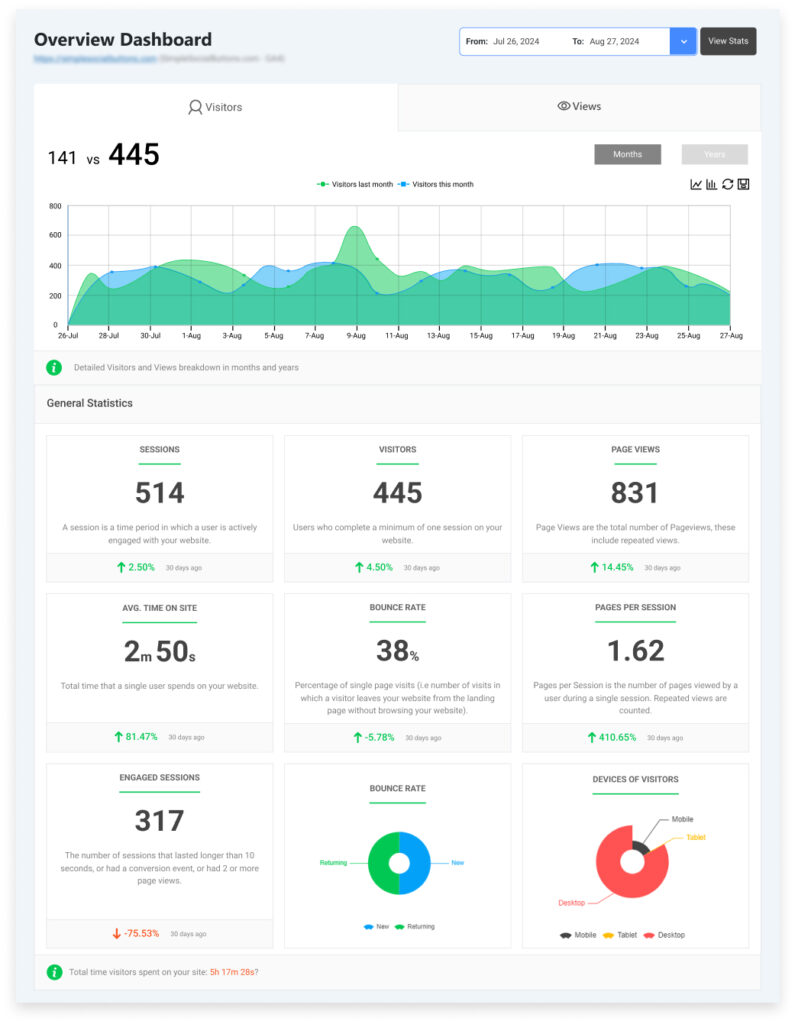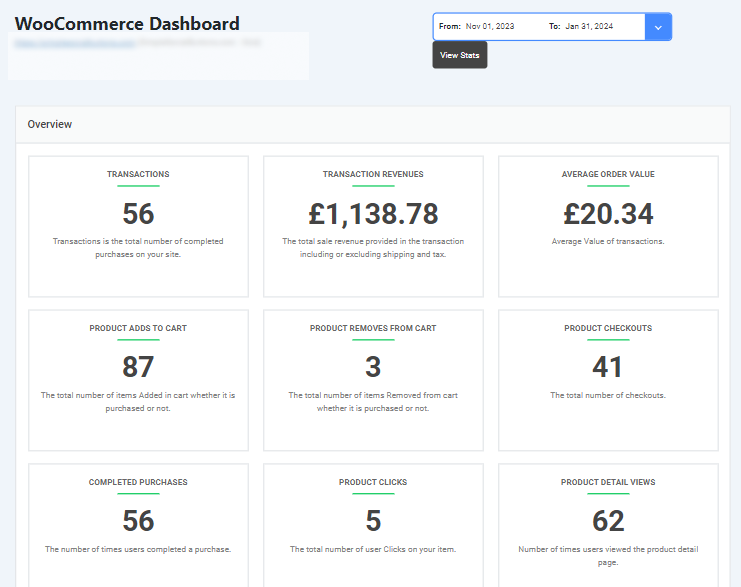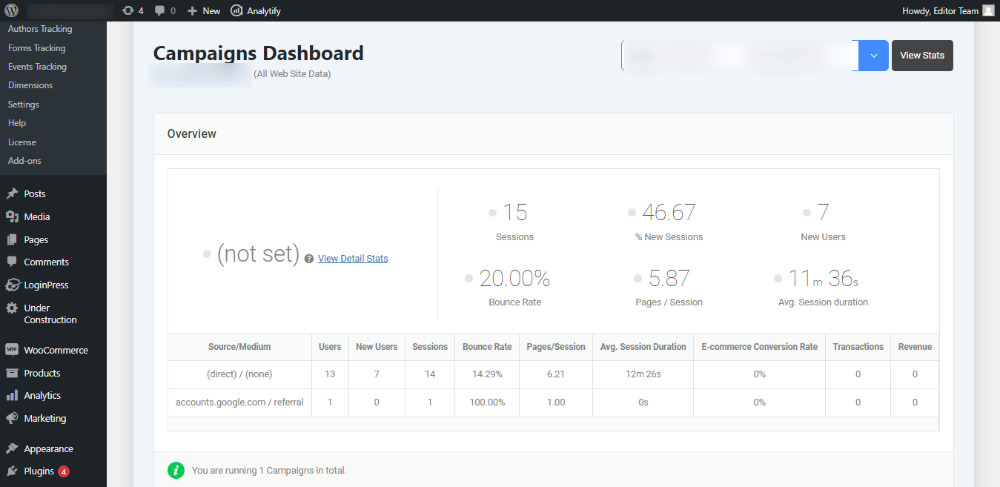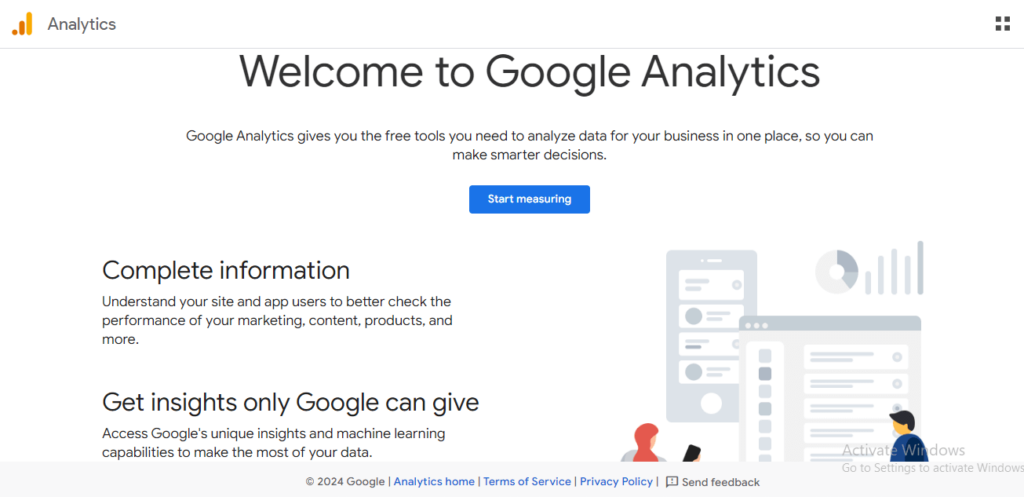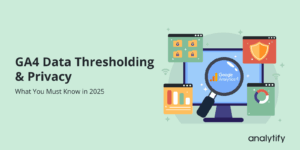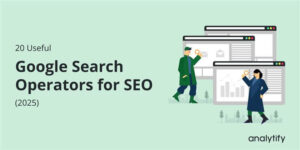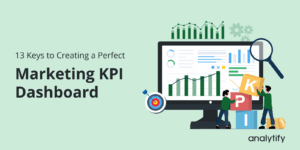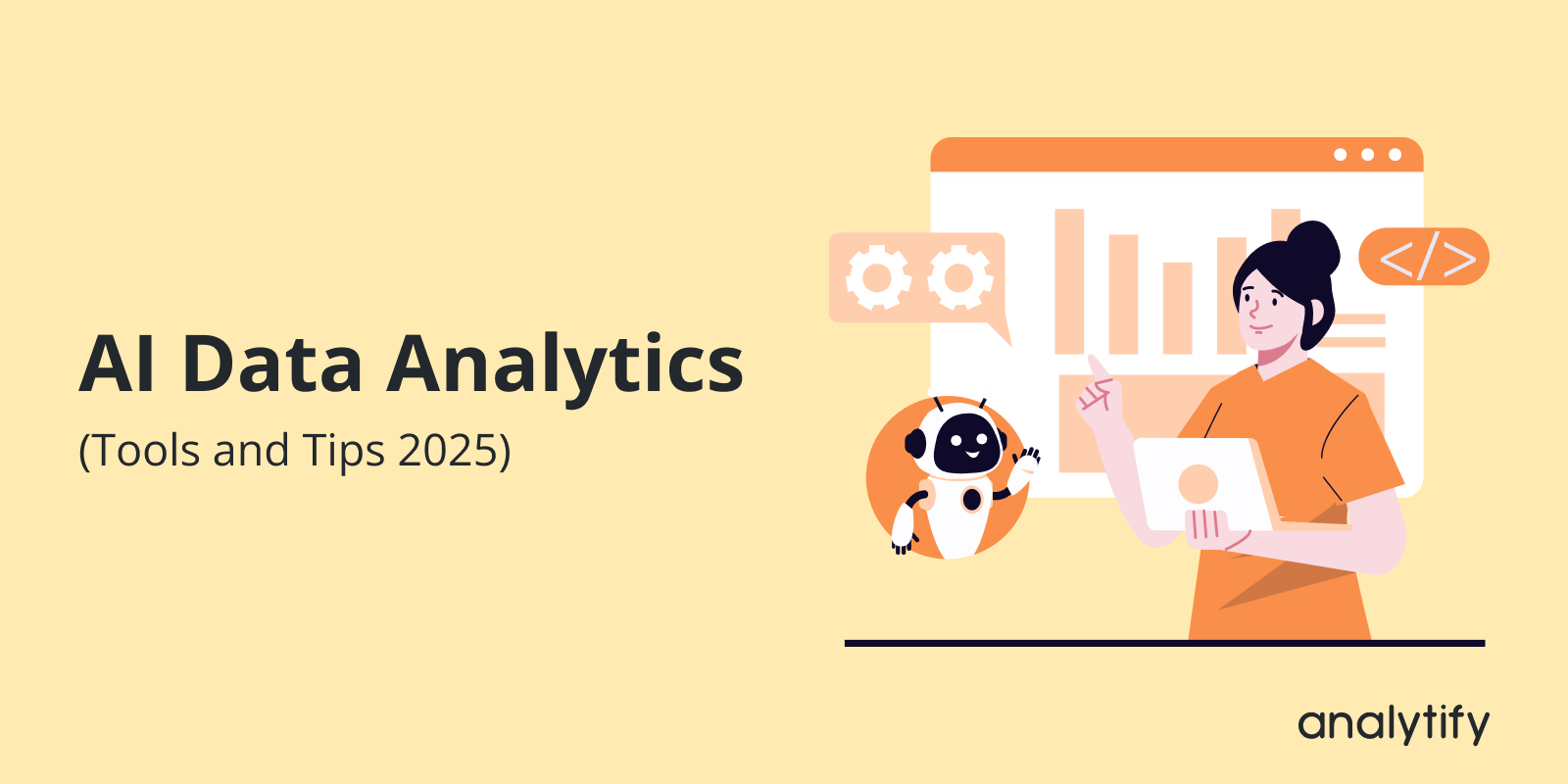
AI Data Analytics (Tools and Tips 2025)
How can AI Data Analytics transform the way you make decisions?
In today’s world, data is everywhere, but how do you turn that data into meaningful insights? The answer lies in Data Analytics AI. By using data analytics with artificial intelligence to analyze and interpret your data, you can uncover hidden patterns, predict future trends, and make faster, smarter decisions.
In this article, we’ll explain how you can use AI data analytics to grow your digital business.
AI Data Analytics (TOC):
What Is AI Data Analytics?
AI data analytics refers to the application of artificial intelligence techniques to analyze and interpret complex data sets. It combines traditional data analysis methods with machine learning, natural language processing, and predictive analytics to provide deeper insights and more accurate forecasts.
AI Data Analytics has a few components:
- Machine Learning (ML): Utilizes algorithms to identify patterns and make predictions based on data.
- Natural Language Processing (NLP): Enables machines to understand and interpret human language, facilitating sentiment analysis and automated reporting.
- Predictive Analytics: Forecasts future trends by analyzing historical data, helping businesses anticipate market shifts.
Why AI Is Revolutionizing Data Analytics in 2025
Generative AI for data analytics is no longer a futuristic concept; it’s actively reshaping how businesses analyze and leverage data.
Here’s why AI is at the forefront of data analytics in 2025:
- Widespread Adoption: A significant 78% of organizations reported using AI in at least one business function in 2024, up from 55% the previous year.
- Generative AI Integration: 71% of organizations are regularly using generative AI in at least one business function, indicating a strong trend towards AI-driven innovation.
- Productivity Gains: Companies integrating AI analytics have reported productivity improvements up to 25%, with some aiming for as much as 80% higher productivity.
- Cost Efficiency: Early adopters of generative AI have achieved average cost savings of 15.2%, demonstrating the financial benefits of AI integration.
- Revenue Growth: 51% of companies integrating AI are seeing revenue increases of 10% or more, highlighting AI’s impact on business growth.
- Generative AI Spending Surge: Worldwide spending on generative AI is expected to total $644 billion in 2025, marking a 76.4% increase from 2024.
These statistics underscore the transformative role of AI in data analytics, driving efficiency, innovation, and growth across industries.
How to Use AI in Data Analytics (Using AI Tools)
Let’s explore how to use AI in data analytics using some best AI tools.
1. Analytify (AI-Powered Google Analytics Reporting)
Join 50,000+ beginners & professionals who use Analytify to simplify their Website Analytics!
Analytify stands as a powerful and user-friendly solution for WordPress businesses seeking to simplify their Google Analytics data while unlocking the full potential of AI for insights. This WordPress plugin seamlessly integrates with Google Analytics to provide businesses with automated, actionable insights right at their fingertips.
With Analytify, you get:
Easy Integration with Google Analytics: Simply connect Google Analytics to Analytify, and it will start tracking advanced metrics automatically, such as user activity, form conversions, and bounce rates.
Real-Time Data: See live updates on user behavior, conversion rates, and eCommerce performance, helping you make data-driven decisions in real time.
Smart Reports: Automatically generate easy-to-understand reports, breaking down complex data into digestible metrics that highlight key performance indicators (KPIs).
Customizable Dashboards: Create dashboards that fit your exact reporting needs, so you can focus on the metrics that matter most to your business.
Enhanced eCommerce Tracking: With built-in eCommerce tracking, Analytify allows you to gain insights into product performance, customer purchasing patterns, and more, helping optimize your online store’s performance.
Benefits of Using Analytify:
- Time-Saving: Analytify Data Analytics setup takes just a few minutes. Connect your Google Analytics account to Analytify, and it will automatically start tracking your site’s performance metrics.
With automatic reporting and AI-driven insights setup, you no longer need to spend hours setting up analytics and analyzing data manually. Let Analytify do the heavy lifting for you. - Simplified Data Understanding: For non-technical users, Analytify simplifies Google Analytics data into visual dashboards and reports, making it easy for anyone to understand key business metrics.
- Tracking Marketing Campaigns: Measure the success of your marketing efforts by tracking important metrics like conversion rates and campaign performance with AI-powered reports.
2. Google Analytics 4 (GA4): The Foundation for AI-Driven Data Analytics
Google Analytics 4 (GA4) is the next-generation analytics platform from Google, designed to provide businesses with deeper insights through AI-powered features. GA4 combines event-based tracking with predictive analytics to offer a comprehensive view of user interactions across multiple platforms.
Google Analytics 4 has the following key features:
- Predictive Analytics: GA4 uses machine learning to forecast customer behavior and trends, helping businesses anticipate future actions.
- Enhanced Event Tracking: This feature allows for more detailed insights into user actions, such as clicks, scrolls, and engagement levels.
- AI-Based Anomaly Detection: GA4 can automatically detect unusual patterns in data, alerting users to potential issues or opportunities.
GA4 AI Data insights will help you in:
- More accurate segmentation and targeting based on predicted behaviors.
- Improved understanding of the customer journey, from acquisition to retention.
You can use GA4 in tracking user acquisition, engagement, and retention metrics.
Additionally, it aids in analyzing customer lifetime value predictions for more effective marketing strategies.
3. Looker Studio (by Google): Visualizing AI Insights
Google Looker Studio is a free tool that allows businesses to turn raw data into visually compelling reports and dashboards. With AI integration, it can help visualize key trends and make data insights accessible to a wider audience.
Key Features:
- AI-Driven Visualizations: Data Studio automatically suggests visualizations that best represent your data, making it easier to understand trends.
- Customizable Dashboards: Users can create dashboards tailored to their specific needs, pulling data from various sources like Google Analytics, Google Ads, and more.
- Collaboration Features: Allows teams to collaborate in real time, sharing reports and insights with stakeholders seamlessly.
Benefits:
- Simplified data analysis through interactive and easy-to-read visuals.
- Enhanced collaboration for better decision-making across teams.
You can use Looker Studio to create executive-level reports for key stakeholders. Also, it helps you in visualizing marketing performance across different channels.
How to Utilize AI Data Analytics (Expert Tips)
Implementing AI in data analytics can bring significant benefits, but it also requires careful planning and strategic execution.
To maximize the value of AI-driven insights, it’s essential to focus on key practices that enhance accuracy, transparency, and collaboration.
Here are some expert tips to ensure successful AI implementation in your data analytics processes:
1. Data Quality: Ensure High-Quality, Clean Data for Accurate Analysis
The accuracy of AI-driven insights relies heavily on the quality of the data being used. Poor-quality data, such as incomplete, inaccurate, or inconsistent data, can lead to unreliable predictions and flawed analysis. To ensure that your AI models deliver valuable insights, focus on the following:
- Data Cleaning: Regularly clean your data to remove duplicates, correct errors, and fill in missing values. This ensures that your AI models are working with accurate and complete information.
- Standardization: Ensure that data is consistently formatted and standardized. This helps in better comparison and analysis across different data sources.
- Data Validation: Implement validation techniques to detect and correct errors before data is fed into AI models. This can include checking for outliers, inconsistencies, or incorrect inputs.
.
2. Model Transparency: Maintain Transparency in AI Models to Build Trust
AI models are often considered “black boxes,” where users may struggle to understand how they arrived at specific conclusions. This lack of transparency can undermine trust in AI systems, especially when used for important decision-making processes. To build trust with stakeholders and ensure the responsible use of AI, consider these practices:
- Explainability: Choose AI models that offer a level of interpretability. For instance, decision trees or linear models are often more transparent compared to deep learning models.
- Model Auditing: Regularly audit your AI models to ensure that they align with business objectives and ethical standards. Document the decision-making process and the assumptions used in the model.
- Clear Documentation: Maintain detailed documentation of how your AI models work, including their data sources, algorithms, and assumptions. This makes it easier for non-technical users to understand and trust the outcomes.
3. Continuous Learning: Regularly Update Models with New Data
One of the strengths of AI is its ability to adapt and improve over time. However, to maintain its effectiveness, AI models need to be regularly updated with fresh data. Without continuous learning, models can become outdated and less accurate as new trends emerge. Here’s how to ensure that your AI models stay relevant:
- Model Retraining: Set up regular intervals for retraining models with new data to ensure they reflect the latest trends and patterns.
- Automated Data Pipelines: Use automated data pipelines to ensure a smooth flow of fresh data into your AI systems without manual intervention.
- Monitor Model Performance: Continuously monitor the performance of your models to identify any degradation in accuracy. This can help you pinpoint when it’s time to update the model.
Tip: Use cloud-based platforms like Google Cloud AI or AWS SageMaker to automate the retraining and deployment of models, making it easier to keep them updated with the latest data.
4. Ethical Considerations: Address Ethical Concerns in AI Implementations
AI has the potential to revolutionize business processes, but it also raises several ethical issues. From biased data to privacy concerns, it’s essential to ensure that AI is implemented ethically and responsibly. Here are some key ethical considerations to keep in mind:
- Bias Mitigation: AI models can inherit biases from the data they are trained on. It’s crucial to actively identify and mitigate biases to avoid unfair outcomes, especially in sensitive applications like hiring or loan approvals.
- Data Privacy: Ensure that AI implementations comply with data privacy regulations, such as GDPR or CCPA, to protect user information and avoid legal issues.
- Accountability: Clearly define accountability in AI decision-making. When AI is used for critical business decisions, there should always be a human in the loop to oversee the process and intervene when necessary.
5. Collaboration: Foster Collaboration Between Data Scientists and Domain Experts
AI in data analytics is not just about technology; it’s also about understanding the business context and the specific challenges faced by an organization. To maximize the impact of AI, it’s essential to foster collaboration between data scientists and domain experts. Here’s how to achieve this:
- Cross-Functional Teams: Bring together data scientists, analysts, and domain experts to collaborate on AI model development. This ensures that the models are aligned with real business needs and deliver actionable insights.
- Continuous Communication: Encourage regular communication between technical and non-technical teams. This helps data scientists better understand the business challenges and enables domain experts to interpret data insights effectively.
- Feedback Loops: Set up feedback loops between AI model users and the development team to ensure that the models are continuously refined based on real-world experiences.
Challenges in AI-Driven Data Analytics
While AI offers numerous benefits, organizations may face challenges during implementation:
- Data Privacy: Concerns over the security of sensitive data. Implement robust data protection measures and comply with relevant regulations.
- Bias in AI Models: Risk of biased outcomes due to skewed data. Regularly audit models for fairness and address any detected biases.
- Integration Issues: Challenges in integrating AI tools with existing systems. Plan for seamless integration and provide necessary training to staff.
- Skill Gap: Shortage of professionals skilled in AI and data analytics. Invest in training programs and consider partnerships with educational institutions.
- High Costs: Significant investment required for AI implementation. Evaluate the return on investment and explore cost-effective solutions.
Frequently Asked Questions: AI Data Analytics
1. What is AI data analytics?
2. How does AI data analytics work?
Q1: What is AI data analytics?
AI data analytics involves using artificial intelligence to analyze large datasets, uncover patterns, and generate insights that inform business decisions. It combines machine learning, natural language processing, and predictive analytics to process data efficiently and accurately.
3. What tools do I need for AI data analytics?
To get started with AI data analytics, tools like Google Analytics 4 (GA4), Analytify, and Data Studio are popular choices. These platforms offer AI-powered features such as predictive analytics, anomaly detection, and natural language querying to help businesses analyze their data effectively.
4. Can AI analyze data in Excel?
Yes, AI can analyze data in Excel. Tools like Microsoft Excel’s built-in AI features, such as Ideas and Data Types, allow users to apply machine learning models to their spreadsheets for tasks like trend analysis, forecasting, and anomaly detection.
5. Will AI replace data analysts?
While AI can automate certain aspects of data analysis, it is unlikely to replace data analysts entirely. AI tools can handle repetitive tasks and process large datasets quickly, but human expertise is still needed for interpreting results, making strategic decisions, and providing context to the data.
6. What are the benefits of using AI in data analytics?
AI enhances data analytics by
Speed: Processing large datasets quickly.
Accuracy: Reducing human error in data interpretation.
Pattern Recognition: Identifying trends and anomalies that might be missed manually.
Predictive Power: Forecasting future outcomes based on historical data.
Accessibility: Allowing users to interact with data using natural language queries.
AI Data Analytics: Final Thoughts
AI is transforming the landscape of data analytics, offering unprecedented opportunities for businesses to gain insights and make informed decisions.
We hope this article helped you in implementing AI Data Analytics strategies for your business.
You may also like to read:
Now, we’d love to hear from you. Which AI data analytics tools were you already using? Share your thoughts below.

